 |
| Search |
|
|

|
 |
Articles
Article published in the Journal in Geopolitics India and Global Affairs: "COUNTERING JIHADI STRATEGIES IN THE SUB CONTINENT"
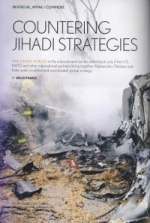 |
| Countering Jihadi Strategies |
Since the deadly attacks in Mumbai, counter-terrorism experts worldwide, particularly those based in democracies in the crosshairs, have been drawing long-term conclusions as to the forthcoming type of operations which may hit cities and interests on more than one continent. Today, we are in the post-Mumbai era where the expectation of recidivism and copycats is eerily high. Indeed, the jihadists who seized a few buildings in India's financial centre and who wreaked havoc at several locations in the city have brought to the attention of national security analysts a concept for the future: Urban jihad. I have predicted these scenarios of mayhem perpetrated by determined terrorists in chapter 13 of my first post 9/11 book, Future Jihad: Terrorist Strategies Against the West, published in 2005.
My projection of al Qaeda and other jihadi tactics was based on a patient and thorough observation of their literature and actions for decades. By now, the public realizes that such scenarios are not possible but highly likely in the future. In all countries where jihadi cells and forces have left bloody traces over the past eight years, at least counter-terrorism agencies have been put on notice: it can happen there as well.
But the Mumbai Ghazwa (raid) reveals a more sinister shadow hovering over the entire subcontinent, if not Central Asia. Although a press release was issues by the so-called ‘Indian Mujahideen', many traces were left - almost on purpose - to show Pakistani involvement, or to be more precise, a link to forces operation within Pakistan, one of them at least being Lashkar-e-Toiba. Other suppositions left investigators in the region with the suspicion that elements within the intelligence service in Pakistan were involved, even if the cabinet wasn't aware of it. This strong probability, if anything, gave rise to much wider speculation since this attack took place in the midst of dramatic regional and international developments.
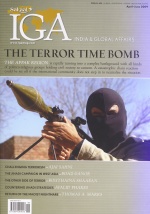 |
| India Global Affairs |
In the United States, the Obama Administration is gearing to redeploy from Iraq and send additional divisions to Afghanistan where the Taliban forces have been escalating their terror campaign. In a counter move, the jihadi web inside Pakistan has been waging both terror and political offensives. In Waziristan and the Swat Valley, just prior to the latest attempts to strike deals with local warlords, Pakistani units were compelled to retreat. A few weeks later, Islamabad authorized the provincial administrators to sign the so-called Malakand agreement with the ‘Movement for the Implementation of Mohammad's Sharia Law', headed by Sufi Mohammad, in which local Taliban would enact religious laws instead of the national secular code.
Across the three countries, Afghanistan, Pakistan and India, it has become clear that the jihadists are acting as an overarching regional force. In short, while Kabul, Islamabad and New Delhi are consumed with domestic challenges, ethnic and territorial crises, the nebulous beginning with al Qaeda and stretching to the local jihadi groups across the land is acting ironically as one, even though with many faces, tongues and scenarios. The jihadists have become continental, while the region's governments were forced into tensions among each other and with their own societies. Hence, exploring the regional strategies of the jihadists is now a must.
Pre-9/11 Strategies
In the post-Cold War era, a web of jihadi organizations came together throughout the Indian subcontinent from Kandahar to the Bay of Bengal. The nebulous was as vast as the spread of Islamist movements that took root in Afghanistan, Pakistan, India and Bangladesh. The cobweb is extremely diverse and not entirely coordinated. In many cases, striking competitions and splinters characterize its intra-Islamist politics. But from political parties, to student unions, to jihadi guerrillas, the main cement of the plethora has been a solidly grounded ideology, inspired by local Deobandism and West Asian-generated Wahabism and Salafism. The ‘Jihadi causes' reflect a variety of claims, from political, sharia, to ethnic territorial. However, all these platforms end in the necessity of establishing local ‘emirates', which eventually are building blocks towards the creation of the Caliphate-to-come.
Inside Pakistan, the Islamists fight secularism, impose religious laws and crave for an all-out ‘Islamist' - not just ‘Islamic' - nation. From this country, a number of jihadist groups have been waging a war on India for the secession of Kashmir, but in order to establish a Taliban-like state. The Pakistan-based ‘Kashmiri jihadists' have connected with their India-based counterparts who in turn have bridges with jihadists operation across India through various networks, including the Islamic Student Union and later the ‘Indian Mujahideen'. The ‘web' stretches east to Dhaka and south all the way to Malaysia and Indonesia.
Unfortunately, western and non-western scholarship in the field didn't recognize the ‘regional' dimension of the jihadi threat on the subcontinent before the 2001 strikes in America and the subsequent attacks in Europe and beyond. Jihadism in South Asia has always been conventionally linked to local claims and foreign policies, while in reality the movement has developed a regional war room; even before the U.S. intervention in Afghanistan, the jihadists had been seeking transnational achievements.
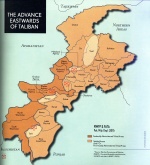 |
| North West Pakistan |
The post-Soviet grand design of al Qaeda was to incite the ‘national' jihadi entities to act in concert with one another, even if their propaganda machines would intoxicate their foes with different narratives. Base in Kabul since the takeover by the Taliban in 1996, the initial plan was to grow stronger inside Afghanistan, make it a ‘perfect emirate' model to follow and from there expand in all directions. Evidently, the first space to penetrate was Pakistan, starting with the northwestern regions.
In the book Future Jihad, I have argued that one of the long-range goals of the 9/11 attacks was to provoke massive jihadi uprisings in many Muslim countries, especially in Pakistan - with help from insiders and the armed forces. The pre-9/11 plan was to infiltrate Islamabad from Kabul and thereafter to penetrate Kashmir and back a massive jihadi campaign inside India. The enormity of developments was supposed to enflame Bangladesh as well. In short, the plan was to ‘Talibanise' the region from Kabul to the Gulf, slicing many enclaves in northern India with it. Obviously, plan ‘A' collapsed as U.S. and NATO forces crumbled the Taliban regime and dispersed al Qaeda.
Post-Tora Bora
As Osama bin Laden and Mullah Mohammad Omar crossed into Waziristan at the end of 2001, the jihadi strategy for the region shifted to Plan ‘B'. However, the basic goal didn't change - to establish a series of emirates in the subcontinent. What changed were the launching pads and the priorities. Now that the epicenter shifted to these valleys inside northwestern Pakistan, the strategic hierarchy imposed a new agenda: First, the tribal areas had to become a no-go zone for Pakistan's armed forces and a new Afghanistan-in-exile was to be established: al Qaeda's remnants in the centre, surrounded by a belt of Taliban, themselves surrounded by an outer belt of fundamentalist tribes and movements. General Pervez Musharraf understood that sending the bulk of his forces there meant an all-out civil war, hence he kept a status quo amidst western frustration.
But the jihadi forces moved on the offensive inside Pakistan via bombings and assassinations, including failed attempts against the former president and the murder of former prime minister Benazir Bhutto. Not only the border areas were falling to the insurgency, but segments of many cities fell under the expansion of urban jihadization. The Red Mosque bloodshed was only an example of the generalized push to seize more power. The minimal goal set by the cohorts of the Islamist and jihadi forces was to immunize Waziristan and the surrounding valleys from any incoming attacks while launching blitzkriegs from these areas in two directions: a comeback of the Taliban inside Afghanistan and strikes inside India.
To the west of Waziristan, the equation was reversed. Instead of a Taliban regime in Kabul spilling over Islamabad, the post Tora Bora situation witnessed the emergence of a quasi-Taliban regime inside Pakistan spilling over back to Afghanistan, hence the recrudescence of operations in the latter's provinces. Eastbound from Waziristan, the nebulous tasted the Pakistan-based jihadists to serve as strategic decoys.
Indeed, the best way to confuse the Pakistani military is to draw New Delhi into a renewed conflict with its western neighbor. Shrewdly, via Lashar-e-Toiba, Jaish-e-Muhammad, Kashmiri jihadists and in association with India-based jihadists - many terror attacks were launched inside Indian territories as of 2002, including strikes against the Parliament, trains and other targets. The inflaming of the India-Pakistan theatre was and remains a key strategic design in the hands of the regional jihadists. This is why the recent strikes in Mumbai were ordered.
Post-Mumbai
Inside the jihadi war room for the subcontinent, preparations are underway to meet two forthcoming challenges. One is the decision by the Obama Administration to send two additional divisions to Afghanistan. General David Petraeus, commander of CENTCOM, and his fellow military strategists have recommended a surge-type campaign to eradicate al Qaeda and its allies from inside most of the country and with the help of other NATO forces, push back the Taliban hordes all the way back to the borders. The second jihadi worry is possible military pressure on Waziristan from the Asif Ali Zardari Government.
Logically, the Taliban/al Qaeda Plan ‘C' will be to try to crumble both offensives before they happen. Therefore, in war games scenarios, if you are the jihadist, you would put all efforts possible to delay and weaken the forthcoming NATO-led surge. How will they go about accomplishing this is a good question. The terror network has more than one tool at its disposal: rapid deterioration inside Afghanistan, striking at NATO allies, disrupting NATO supply lines originating in Pakistan, assassinations and even possible strikes on the American homeland, if they can.
But one other tool may also be considered: luring Washington into negotiations with the Taliban. Already the propaganda machine of the jihadists from different corners of the planet, including via its tentacles inside the western media, is pushing the idea that discussions with the ‘good Taliban' is a viable and pragmatic option. Recently, a particular push for considering radical Islamism as a ‘fact of life' to be recognized has materialized in a publicized Newsweek article. Painting the jihadists as credible partners in a peacemaking equation is, in fact, part of a smart maneuver to gain time and delay U.S.-led efforts to defeat the network in Afghanistan. Ironically, similar moves were undertaken in Pakistan. In order to delay Islamabad's new secular government in its preparedness to confront the Taliban once and for all, good cop-bad cop tactics are employed: suicide bombings target officials and civilians alike, while offers for ceasefire from local Islamists shower the authorities.
The recent agreement of Malakand signed between Sufi Islam and Pakistani authorities allows the implantation of sharia in the province and guarantees a truce for a while. With time, the agreement will be used to the advantage of the Taliban to indoctrinate the youth, recruit fighters and suicide bombers, repress civil society movements and eradicate government presence. Just look at the Waziristan Accord (2006) as an example.
Another trap we should not allow ourselves to fall into is calling those who are reconcilable the ‘good' Taliban or the ‘little' Taliban. We should avoid assigning the label to armed opposition groups or other groups that may associate with the Taliban on a small level. Just as it would have been a strategic mistake to label the members of the Sahwa in Iraq little ‘q' al Qaeda or ‘good' al Qaeda - it would be quite the blunder to consider as Taliban those who cooperate with the Taliban out of fear or those that seek cooperation as a way to feed their family.
And as the stalling tactics are employed in Afghanistan and in Pakistan, reverse moves will be executed in India. Unfortunately, the regional war room more than likely will order terror activities on Indian soil to diminish the will of the Pakistani government to go to Waziristan. If violence erupts on its eastern border with India, Pakistan cannot be sending troops to battle the Taliban on its western frontiers. Inflaming tensions between New Delhi and Islamabad causes the latter to redeploy forces from the FATA and Northwest Frontier Province to the border with India, thereby relieving military pressure the Taliban faces in northwest Pakistan. Thus Plan ‘C' seems to announce waves of happenings in the subcontinent. What can and should be done about it, remains the most important question.
Counter Strategies
Any counter strategy design must being with the following affirmations:
That the threat is strategic and regional, not just local and legitimate.
That the counter strategies must put the confrontation of the regional threat above all local considerations and issues.
That the United States and its allies operating out of Afghanistan are determined to engage that threat with all the tools at their disposal and with the largest alliance it can muster.
That Pakistan and India should realize that they are both targeted by the jihadists regardless of their quarrels over ethno-territorial issues.
With these principles accepted, a global set of counter strategies can be set to deal with al Qaeda/Taliban and their jihadi nebulous in the subcontinent.
Afghanistan
The US-led NATO coalition should proceed with the reinforcement of the expeditionary force to levels capable of insuring a full control of the country's national soil; and at the same time a gigantic effort must be mustered in three directions: training and equipping the Afghan Army and Police, supporting a vast network of civil society NGOs countrywide, and reaching out to countries which haven't yet participated in the post-9/11 counterterrorism campaign in Afghanistan, such as Russia, India, China, Indonesia, Brazil and Nigeria, and invite them to join the consortium in sectors of their choice. The further the campaign is internationalized, the more jihadists will be isolated.
Engagement Strategies
The U.S. and NATO should not be dragged to the path of the so-called partnership with jihadists to defeat other jihadists. In this game, the more ideological and sophisticated factions always win. Instead, the international coalition must engage the democratic forces and sustain them to win the intellectual and political battle.
Pakistan
The present government must undertake a full reassessment of its past strategies and reform its own forces so that it can ready itself to wage a national mobilization, part of which will be on the military level, but the most significant part must be on the popular and political levels. The campaign to counter the terror forces can only be successful if large segments of the population are engaged in the struggle against fundamentalism.
India
New Delhi, too, will have to reshape its plan to counter the jihadi strategies in the region and on its soil. While the military and security engagement against local terror groups will continue, Indian resources in the war of ideas will have to be tapped. As a major economic and technological power in the region, and now worldwide, India has the ability of opening a new front against radical ideologies with the help of linguistic, cultural and intellectual skills, crucial to the battle. The establishment of a vast network of television and radio broadcasts, NGOs and intelligence capability based on Indian soil can weaken Islamist radicalism.
Last but not least, the vital cement of all the above strategies is their integration and eventually fusion under one platform. If the United States, NATO and other international partners can bring together the three democratically-elected governments of the subcontinent - Afghanistan, Pakistan and India (and perhaps Bangladesh) - under a unified and coordinated global strategy, the jihadi forces will be isolated and gradually rolled back.
************
Dr Walid Phares is the Director of the Future Terrorism Project at the Foundation for the Defense of Democracies, a visiting scholar at the European Foundation for Democracy and the author of The Confrontation: Winning the War against Future Jihad. Dr Phares teaches global strategies at National Defense University.
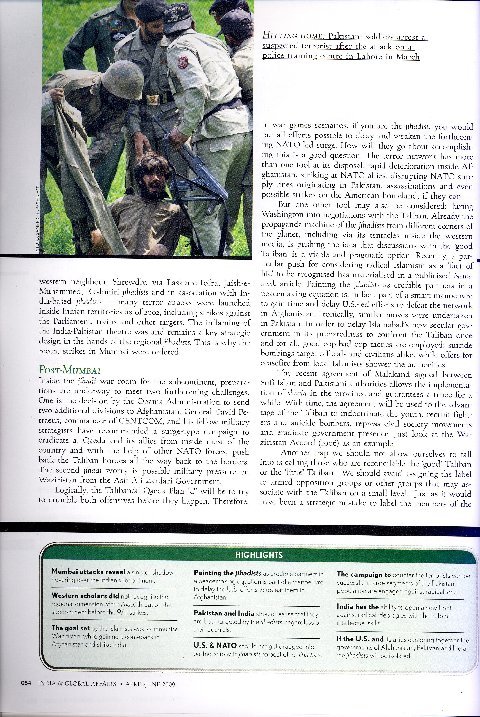 |
| Mumbai 1 |
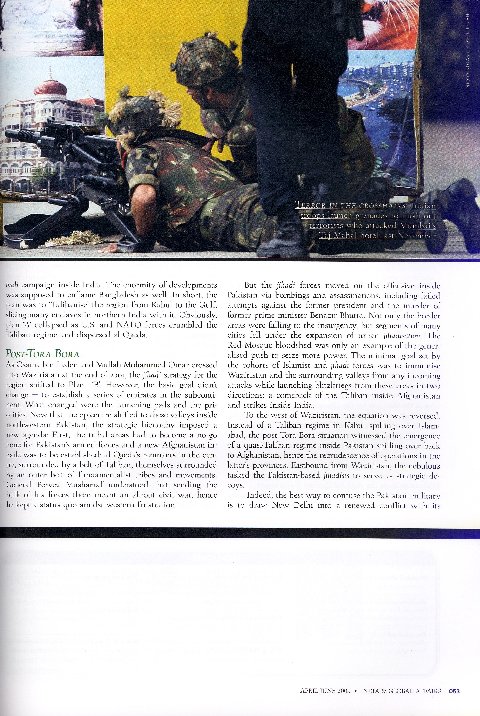 |
| Mumbai 2 |
© Copyright 2003-2018 by walidphares.com
Top of Page
|
|
 |
Articles
Recent Headlines
|

|







